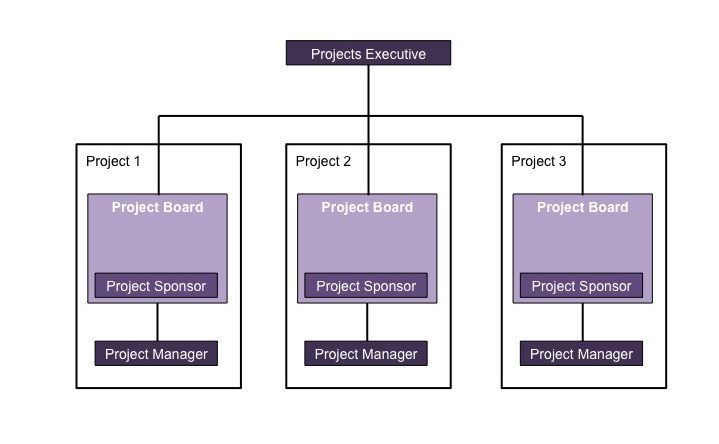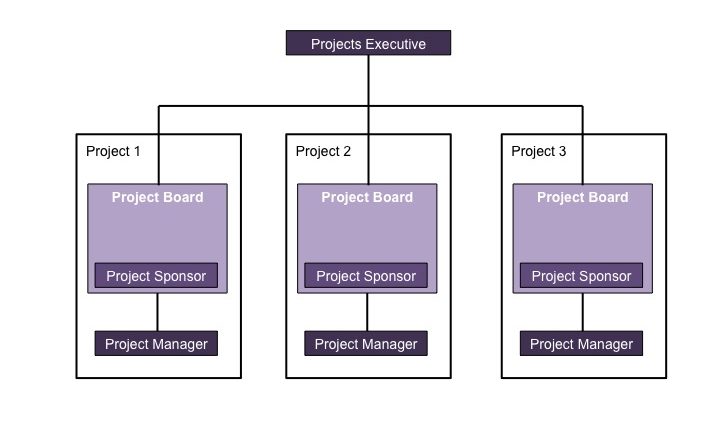
- Project, Programme and Portfolio Management
- No comments
ENSURING PROJECT PERFORMANCE & CONFORMANCE.
During and after rolling out the project management framework, it is important to provide ongoing support to the project community so that any queries, issues or improvement ideas they have with the processes, tools or templates can be promptly addressed. Otherwise, individuals may feel the need to find ways around the intended ways of working.
With a well-defined and well supported framework in place, that individuals are familiar with, being applied to projects that are utilising resources that are not over-allocated, the organisation can be confident that how it is expecting individuals to contribute to successful project delivery, for the benefit of the business, is reasonable.
Given this, it is fair and important to govern projects, ensuring project performance and conformance to the project management framework. This blog post discusses that, to enable this, it is beneficial to put in place some project assurance mechanisms, to provide ongoing checks on projects on behalf of the Project Sponsor and Project Board.
.
Key Takeaways:
|
Project Governance
I have previously defined a project lifecycle, with gates at key points at which projects are expected to have defined criteria in place. This provides a key governance mechanism. The role of the Project Sponsor was also defined, which is a key role in terms of governing projects.
Furthermore, I described how project reports can be used to illustrate project performance, which is a key tool for governing projects. These can be supplemented with other reports that are checking projects for conformance to the project management framework, which is a key tool for project assurance (and is further discussed in the next section).
By receiving the performance and conformance reports for their own projects, the various project sponsors can provide the first level of project governance, but an organisation will often have in place a governance structure that sits above all projects. This is usually achieved either through separate Project Boards for each project, with a Projects Executive sitting above all of them:
 or with a single Projects Board
or with a single Projects Board

The latter model may easily fit with existing organisational board structures. It is the responsibility of the Projects Executive (in the first model) or the Projects Board (in the second model) to arbitrate and prioritise where there are conflicts across projects. It is important to define the decision-making authorities of the Project Manager, Project Sponsor and Project Board (or Projects Board) within the various roles and responsibilities for gate approvals, project changes and providing direction on treatment of escalated risks and issues etc.
Project Assurance
It is useful if the governance of projects is assisted by a project assurance mechanism and function, which provides analysis across projects of their performance and conformance to the project management framework. Project assurance should be independent of the projects themselves, although it could sit alongside the project support function in the organisation structure.
We have already described, the reports that will help track project performance, both across projects (the Portfolio Summary Report) and by individual project (the Project Summary Report), so we now need a mechanism for checking projects for conformance. Below is a list of recommended conformance checks that fit with the processes we have discussed:
| Conformance Check | |
| Organisation | |
| Does the project have an up-to-date organisation structure that defines who is fulfilling each project role and formal communication paths? | |
| Does the project plan include scheduled project reviews? | |
| Quality Management | |
| Is the Concept Brief/Project Definition/Project Initiation Document (PID) in the expected state? | |
| Do appropriate descriptions exist for each project deliverable that include the correct information? | |
| Does the plan include quality related activities that are cross referenced? | |
| Schedule Management | |
| Is the plan structured in line with the standard project lifecycle phases and with the control gates between them? | |
| Is the plan structured in line with the project deliverables? | |
| Does the plan include appropriate use of milestones? | |
| Has the plan been appropriately baselined? | |
| Are all of the tasks in the plan resourced appropriately and with no over-allocations? | |
| Are there any tasks in the near-term that do not have specific resources assigned to them? | |
| Has the plan been progressed in line with the defined update cycle? | |
| Do any tasks have any uncompleted work in the past? | |
| Cost Management | |
| Does the time-phased cost-to-complete align with the plan? | |
| Has an appropriate risk contingency been calculated that is included in the cost-to-complete? | |
| Are there any gaps in the actual cost-to-date data that are not accounted for? | |
| Risk Management | |
| Have the organisation’s standard project risks been evaluated? | |
| Have additional project specific risks been identified and evaluated? | |
| Has the treatment of all identified risks been decided? | |
| Have mitigation and fallback tasks been planned and cross-referenced where appropriate? | |
| Have risks that have passed their proximity trigger points without causing issues been closed? | |
| Issue Management | |
| Are there any current issues that have not been identified? | |
| Have all identified issues been rated (RAG = red, amber or green)? | |
| Have resolution tasks been planned and cross-referenced where appropriate? | |
| Have issues that resulted from risks been cross-referenced? | |
| Change Management | |
| If the project does not currently predict that it will achieve what has been defined in the Project Initiation Document (PID), have the variances been formally agreed as changes? | |
| Have changes that resulted from risks or issues been cross-referenced? | |
Having defined the list of conformance checks, there needs to be a trigger for conducting the checks. Depending on the project assurance headcount in relation to the number of projects in progress at any time, it may be appropriate to monitor some key checks regularly, perhaps by investing in some automation, whilst conducting more in-depth checks less frequently.
One option is that the project assurance function can maintain a calendar of periodic checks of when it will ‘audit’ each project. Otherwise, check points can be built into the project lifecycle; for example at each of the gates. Another alternative is to define a trigger based on key project performance and conformance criteria.
Project Support
It is usual and helpful if the parts of the business that provide project support are the same as those which ‘own’ the project management framework (lifecycle and underlying processes, tools and templates).
Deciding the best model for supporting projects is very dependent upon the size, structure and diversity of the organisation. In small organisations it may be sufficient to have a single central supporting function, whereas in larger organisations it may be more appropriate to have a hierarchical support structure, to ensure that standardisation is optimised whilst allowing for local variations in application.
I propose the following list of responsibilities for a project support function (or hierarchy of functions):
| Maintenance and evolution of the project management framework (processes, tools and templates). |
| Providing training and guidance on application of the project management framework. Assisting maintenance of the project plan and logs. |
| Monitoring the ongoing conformance of the project to the project management framework. |
| Assisting the compilation of reports and with communications (both internal and external to the project). |
| Assisting preparation for project reviews and gate reviews. |
| Controlling the versions of project deliverables, documents and other files. Controlling the archiving or scrapping of obsolete versions of project deliverables, documents and other files. |
| Assisting with organisation of project logistics |
Having defined the list of conformance checks, there needs to be a trigger for conducting the checks. Depending on the project assurance headcount in relation to the number of projects in progress at any time, it may be appropriate to monitor some key checks regularly, perhaps by investing in some automation, whilst conducting more in-depth checks less frequently.
One option is that the project assurance function can maintain a calendar of periodic checks of when it will ‘audit’ each project. Otherwise, check points can be built into the project lifecycle; for example at each of the gates. Another alternative is to define a trigger based on key project performance and conformance criteria.
If there is a hierarchical project support structure it is important to ensure that, at the top level the processes are defined with enough flexibility to accommodate the differences in application at the levels below. Similarly, any tools and templates must be designed and configured in such a way that variations in application of the processes are possible. It is also important to ensure that the local procedures, which describe application of project management processes specific to parts of the organisation, are kept in line with the centrally controlled processes.
Let’s talkAre you looking at ensuring project performance and conformance? I’d be pleased to discuss your requirements. I am conveniently based in Milton Keynes and have a very good track record of implementing simple frameworks (of processes, tools and templates) into small and large businesses throughout the UK, across many industries, which greatly improve value from investments. Get in touch or call me on 07725 950775 |
